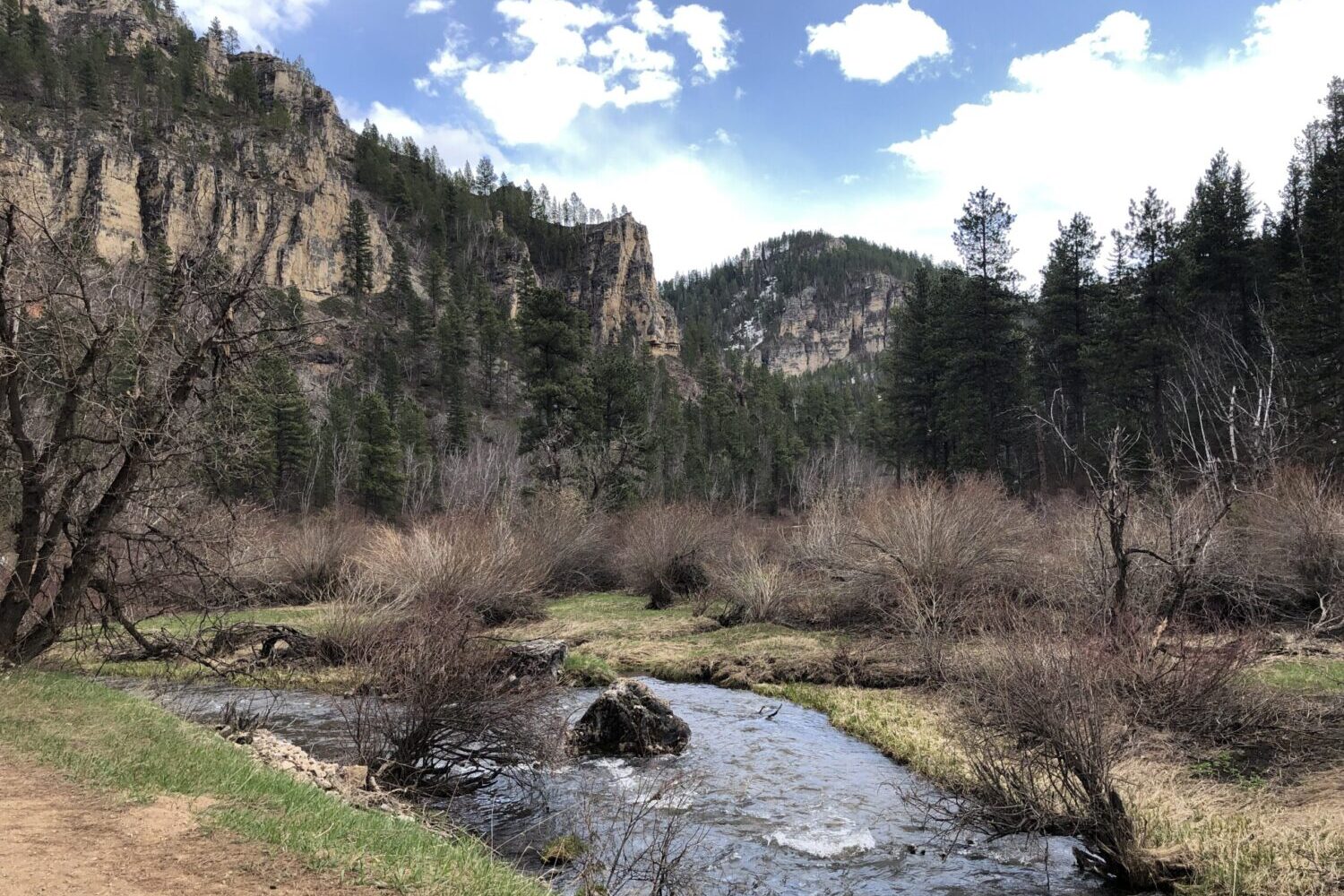
John Hult, South Dakota Searchlight
PIERRE – Water quality advocates want lawmakers to pump $5 million into the creation of a Black Hills watershed program that would prevent its streams from turning out as polluted as those in eastern South Dakota.
House Bill 1235 came from Rep. Scott Odenbach, R-Spearfish, and Sen. Red Dawn Foster, D-Pine Ridge. Its impetus is a lack of coordinated watershed protection efforts in the west, Odenbach said Wednesday, and a recognition that South Dakota “has a lot of work to do” to address pollution.
Odenbach cited the most recent Integrated Water Quality Report, produced biennially by the state Department of Agriculture and Natural Resources to ensure continued access to federal clean water funding. In 2022, 78% of the state’s water bodies were listed as “impaired” for one or more of their beneficial uses, such as recreation, wildlife habitat or drinking water.
Institutions like the East Dakota Water Development District dispense grant funding for watershed protection and pollution mitigation, the Spearfish Republican told the Joint Appropriations Committee, directing money to projects specific to certain watersheds. The northern Black Hills has no comparable organization to coordinate efforts for its own waters. The West Dakota Water Development District covers a portion of the central Black Hills in Pennington County.
A monetary spur for the creation of a northern Black Hills watershed protection program from the Department of Agriculture and Natural Resources is needed sooner rather than later, Odenbach said.
Polluted waters are more likely to be found in eastern South Dakota, according to the integrated report.
“I want to do this to get ahead of the explosion in development in the Black Hills,” Odenbach said. “I want to have a program like they’ve had and done so well with in eastern South Dakota … frankly, I don’t want Spearfish Creek to look like the Big Sioux River.”
Another supporter, Spearfish Republican Sen. Randy Deibert, told the committee that the west lacks the abundant water resources of eastern South Dakota. That makes the need for pollution control even more important, Deibert said.
“In most of the state, you have rivers. What we have are creeks,” Deibert said.
Most water body impairment in eastern and western South Dakota is tied to “nonpoint source pollution,” meaning pollution that flows from a variety of sources, rather than a single point like factories or a city’s wastewater treatment plant. Point source pollution is regulated; nonpoint source pollution is not.
A good share of that nonpoint source pollution is tied to livestock waste, which flows into surface waters through runoff or is dropped directly by cattle standing in a creek.
In the east, that pollution has been tackled with cash, offered to livestock owners to fence off water bodies or to plant vegetated buffer strips to “clean” runoff on its way to the water.
Backers of HB 1235 would like to see similar efforts launched in the Black Hills. Eastern South Dakota started from behind with its mitigation efforts, which has made it difficult to move the needle for larger water bodies like the Big Sioux River.
“It’s easier to keep something clean than it is to come in and clean it up after the fact,” said Jay Gilbertson, manager of the East Dakota Water Development District.
The bill specifies that grants would be made available to encourage the placement of riparian buffers. Many waterways in the Black Hills are not impaired, and “we’d like to keep it that way,” Gilbertson said.
Representatives from the Sierra Club and Izaak Walton League also testified in support of the bill, pointing to the importance of mitigation efforts, water quality testing and monitoring efforts in the preservation of the state’s natural resources. Clean water is important to tourism, they noted, which represents a larger share of the West River economy.
“What you will find in many, many areas is that water bodies are tested extremely infrequently, if at all,” said Guy Larson, lobbyist for the Sierra Club. That organization contributes data from the Yankton area to the state’s water quality map.
Foster urged her fellow lawmakers to consider the importance of clean water in centuries-old Lakota ceremonial traditions as they ponder funding for pollution prevention.
As the west grows in population, Foster said, the state must move to protect the way of life that draws people, and to protect the traditions of its first residents.
“It is important, not only to the recreational, economic and environmental, but to the spiritual relationships that we have there,” Foster said.
HB 1235 had no opponents, and questions from appropriators largely revolved around East River mitigation efforts and how they might translate to West River waters.
Appropriators deferred action on HB 1235.
